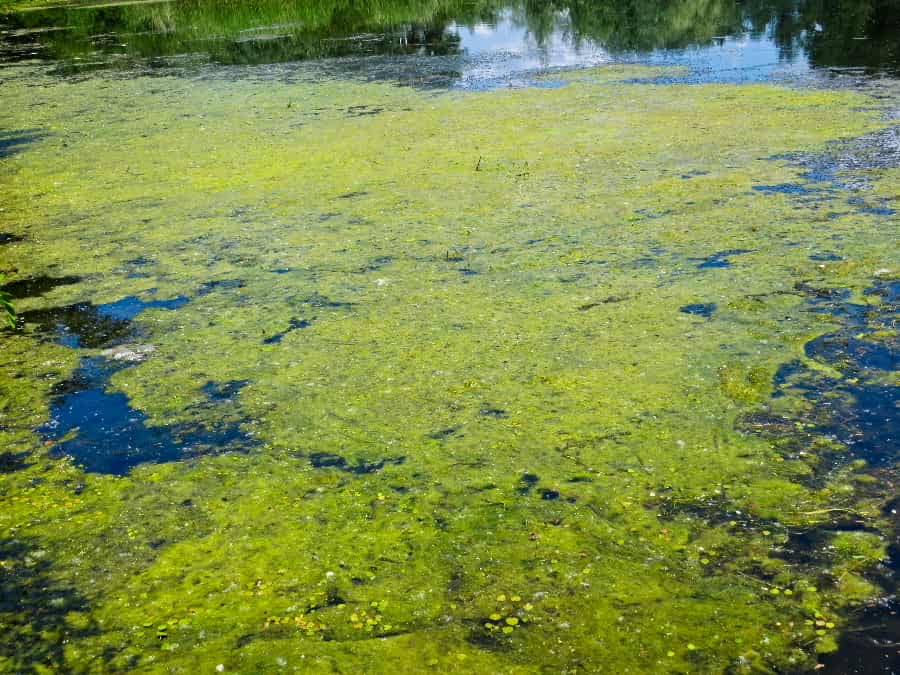The process by which water bodies, enriched by excessive nutrients, experience algal blooms is known as eutrophication. While some algal blooms are harmless, others harm both aquatic life and humans, due to the toxins they produce. Furthermore, after the algae die, they sink to the bottom of the water body, where bacteria and other microorganisms begin decomposing them, consuming oxygen in the process. The result is the creation of so-called dead zones, characterized by complete absence or extremely low levels of oxygen, which are fatal to aquatic life.
Eutrophication has a severe impact not only on the environment, but also on the socioeconomic conditions of the area in which it occurs. It causes economic losses such as increased water purification costs for human and industrial consumption, navigational obstructions, foul odors, and so on. The greater the intensity of nutrient pollution, the more extensive the development of algal blooms becomes, leading to deteriorating water quality and the need for prompt and professional reaction.
Causes of Eutrophication
There are several factors responsible for eutrophication. Humans greatly impact this process through agricultural and industrial activities and wastewater discharge. Due to climatic conditions, eutrophication becomes even more pronounced. Warmer temperatures speed up algae growth, while changes in precipitation affect higher concentration of nutrients in water, leading to the same outcome. This happens both in conditions of drought, when water levels decrease, as well as during periods of increased rainfall and storms that transport sediments, fertilizers, chemicals and other contaminants resulting from urban development, agriculture and industrial processes from the land into water bodies.
Detrimental Impacts of Eutrophication on the Environment, Public Health and Economy
Eutrophication triggers a chain of environmental issues, public health concerns and economic losses. Dense algal blooms, created as its direct consequence, impede water clarity and obstruct sunlight from reaching underwater vegetation. Certain species of algae, such as cyanobacteria, dinoflagellates, and diatoms, can produce toxins that contaminate water and therefore pose a threat to aquatic and human life.
Algal toxins accumulate in fish tissues and can either kill fish or endanger human health if contaminated seafood is consumed. Fish kills and mass mortality among other aquatic organisms are also caused due to the condition known as hypoxia, characterized by lack of oxygen in aquatic ecosystems. This condition is a direct consequence of decomposition of algal blooms following their death, which results in increased oxygen consumption.
Algal blooms become dominant in the water body, jeopardizing biodiversity by suppressing the growth of other species, harming aquatic life, and disrupting the food web. This decline in biodiversity can have a domino effect on the entire ecosystem, impacting the abundance and variety of other organisms that rely on diverse plant communities for habitat, food, and other resources.
In order to protect public health, regulated swimming areas affected by algal blooms must be closed to ensure people avoid contact with harmful blue-green algae and their toxins. This closure results in decreased revenue for local businesses catering to tourists. Furthermore, negative publicity about water quality issues and health risks associated with harmful algal blooms can damage destination reputation and lead to long-term economic losses. The negative effects of eutrophication and algal blooms also extend to commercial and recreational fishing and seafood industries, resulting in substantial economic costs.
Water Quality Monitoring and Prevention of Eutrophication
Understanding, monitoring and preventing eutrophication in a water body is critical to its long-term health. Eutrophication can be assessed by monitoring concentrations of nutrients, dissolved oxygen levels, as well as chlorophyll-a and phycocyanin concentrations. LG Sonic’s innovative solar-powered technology enables remote and real-time measuring of nutrient pollution at various depths and timely prevention of water quality problems associated with eutrophication.
Phosphate is a key nutrient contributing to eutrophication when present in excessive amounts. LG Sonic Phosphate Monitoring offers fast and reliable data on phosphate levels, enabling governments, businesses, and individuals to adopt a proactive approach to water quality management and safeguard the health of water resources. Managing phosphate levels is crucial in preventing or mitigating eutrophication and maintaining the health and quality of water bodies.
Climate change presents a substantial risk of exacerbating nutrient pollution due to higher temperatures and altered rainfall patterns, thereby creating favorable conditions for the proliferation of algae blooms. Especially during times of these global challenges that threaten the stability of our ecosystems and environment, prioritizing eco-friendly technology becomes paramount. LG Sonic continues to pioneer in sustainable water management solutions, ensuring a healthier planet for future generations.
